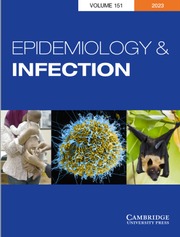Article contents
Statistical concepts in the theory of bacterial mutation
Published online by Cambridge University Press: 15 May 2009
Extract
This paper is a short exposition of the mathematical and statistical theory of the growth of bacterial populations subject to mutation.
A mathematical model for the long-term development of a mixed population with two types of organism is proposed. The proportion of organisms which are of the mutant type eventually approaches an asymptotic value, which is independent of the initial composition of the population. A procedure is outlined for estimating the forward and backward mutation rates from a long-term experiment.
The exact interpretation of the constants representing mutation rates requires some assumption about the point of time, during an individual life cycle, at which mutations occur. The usual assumption is that mutations can occur with equal frequency at all instants during the cycle.
In short-term experiments, in which the proportion of mutants is at all times negligible, it is important to consider the variation between the numbers of mutants developing in replicate cultures. The theoretical distribution of Lea & Coulson may be disturbed by the failure of any one of a number of assumptions; the effects of such disturbances are considered in some detail.
Various methods of estimating the mutation rate from an observed series of replicate cultures are examined. Two of the main sources of disturbance of the theoretical distribution may be delay of phenotypic expression, and the existence of multinucleate cells with dominant mutation. These factors affect particularly the lower tail of the distribution, and it is suggested that a fairly safe procedure may be to estimate the mutation rate from the upper quartile of the observed distribution. Tables 3 and 4 enable the estimate of the mutation rate, together with 95% confidence limits, to be readily calculated.
Information
- Type
- Research Article
- Information
- Copyright
- Copyright © Cambridge University Press 1953
References
- 29
- Cited by

